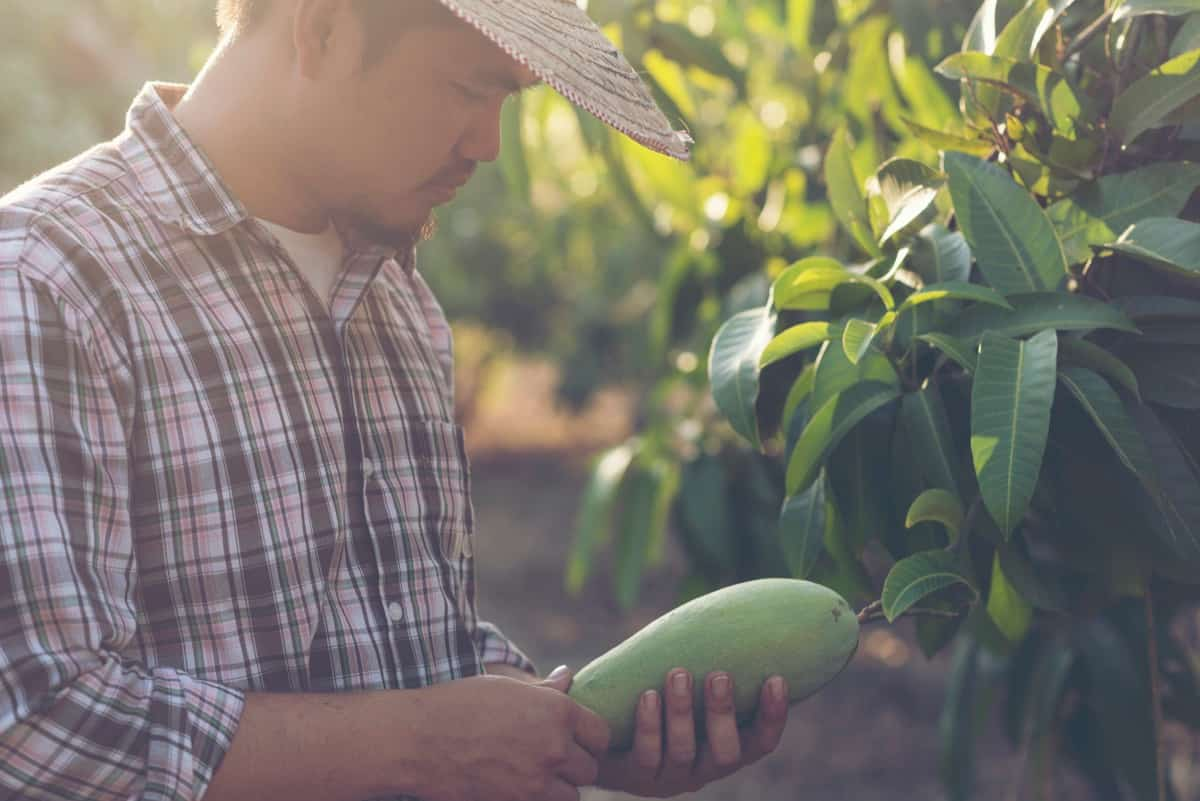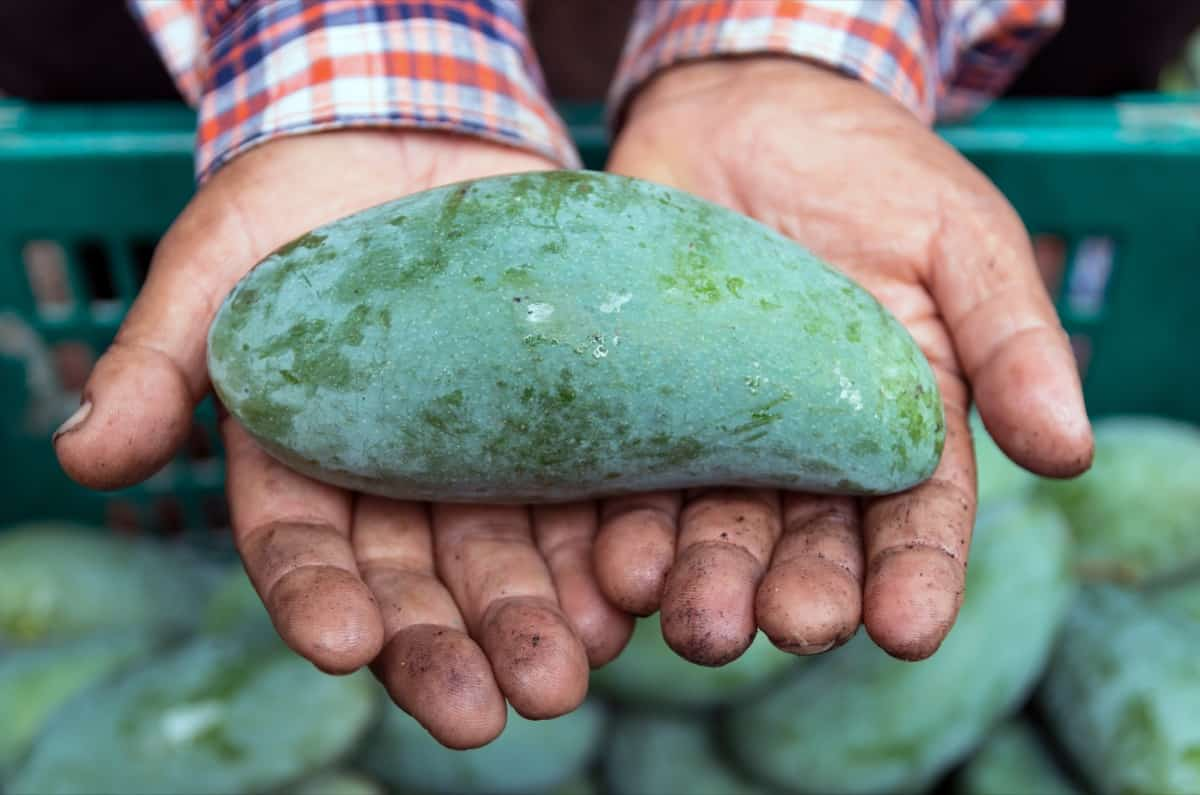Dashehari Mango Farming is a popular agricultural practice that cultivates and harvests the renowned Dashehari mango variety. Known for its rich flavor, sweetness, and vibrant color, Dashehari mangoes are highly sought after. This farming technique involves specialized care and optimal growing conditions to produce high-quality mangoes for commercial purposes.

What is Dashehari Mango Farming?
Dashehari Mango Farming is a specialized agricultural practice that cultivates the esteemed Dashehari mango variety. Originating from the village of Dashehari in Uttar Pradesh, India, these mangoes are highly regarded for their exceptional flavor, sweetness, and vibrant golden-yellow skin.
The farming technique provides optimal growing conditions such as well-drained soil, ample sunlight, and regular irrigation. Proper pruning, pest control, and nutrient management ensure healthy tree growth and maximize fruit production. Dashehari mango farming is vital in the commercial mango industry, allowing farmers to cultivate and market this premium mango variety.
Special Features of Dashehari Mango
- Dashehari mango is a fragrant and sweet variety grown in North India, Andhra Pradesh, Nepal, and Pakistan.
- A high-yielding clone of Dashehari was selected, providing 38% more yield than other trees.
- This clone exhibits regular bearing, producing a crop every year.
- The tree’s reproductive and vegetative growth is evenly distributed, ensuring consistent fruit production.
- The Central Institute for Subtropical Horticulture played a role in selecting and developing this productive clone.
Pits Preparation for Dashehari Mango
- Prepare pits for Dashehari mango farming by selecting a suitable location with well-drained soil.
- Dig pits of approximately 1.2 meters in depth and width.
- Addition of organic matter like compost or well-rotted manure into the pit.
- Ensure proper spacing of holes, about 10 to 12 meters apart.
- Maintain a distance of 15 to 20 meters between rows.
- Allow pits to settle for a few weeks before planting the Dashehari mango saplings.
Plantation of Dashehari Mango Trees
- Selection of Healthy Saplings: To select healthy saplings for Dasheri mango farming, you should look for saplings that are at least six months old and have a height of 1.5-2 feet.
- Plants Per Acre: The number of Dasheri mango plants per acre depends on the plantation technique. In ultra-high-density plantations (3×2 m spacing), it’s 674 plants/acre. In traditional plantations (10m*10m spacing), it’s around 63 mango trees/acre.
- Age of the Plant when Planted: For Dasheri mango farming, choose saplings 6+ months old, with a height of 1.5-2 feet, ensuring their health and readiness for planting.
- Support and Stacking of Plants: Support and stack Dasheri mango plants using stakes or trellises to promote upright growth, enhance sunlight exposure, facilitate air circulation, and prevent branches from sagging or breaking.
In case you missed it: Chausa Mango Farming: A Comprehensive Guide to Planting, Pruning, Care, and Harvest

Drip Irrigation/ Water Management in Dashehari Mango
Implement drip irrigation for efficient water management in Dasheri mango farming. The water requirement for mature mango trees is around 850-1000 liters per day during the peak summer season. Drip irrigation can save up to 50-60% of water compared to traditional irrigation methods. Set up a drip system with emitters near the root zone, ensuring a slow and steady water supply, reducing water wastage, and promoting optimal growth and fruit development.
Compost/Fertilizers Application Stages
- Pre-planting: Incorporate compost or organic matter into the soil.
- Early growth stage: Apply nitrogen-rich fertilizers to promote vegetative growth.
- Flowering stage: Use phosphorus-rich fertilizers to support flower development.
- Fruit development stage: Apply potassium-rich fertilizers for healthy fruit growth.
- Maintenance stage: Continue with balanced fertilizers, ensuring adequate nutrients for overall plant health.
- Regularly monitor soil nutrient levels and adjust fertilizer applications accordingly.
Pruning Stages/Season for Dashehari Mango
- Winter season is the best time for pruning Dasheri mango trees.
- Prune over 3-4 years to avoid tree damage.
- Year 1: Remove dead or diseased branches.
- Year 2: Remove crossing or rubbing branches.
- Year 3: Remove branches growing towards the center.
- Year 4: Remove branches growing close to the ground.
- Pruning promotes tree health, shape, and fruit production.
- Regularly inspect and prune as needed for ongoing maintenance.
Flowering Stages for Dashehari Mango
Time of Flowering: The Dasheri mango has a relatively short flowering period of 2 to 3 weeks, which can be extended by lower temperatures and shortened by higher temperatures. The number of flowers in one panicle ranges from 1000 to 6000, depending on the cultivar and the tree’s age.
Factors affecting Flowering: Temperature and Climatic Conditions Water availability influences mango tree flowering
Importance of Flowering: Flowering is crucial for mango trees as it marks the fruit production stage. Dasheri mangoes typically have a brief flowering period lasting 2 to 3 weeks, which can be prolonged by lower temperatures or shortened by higher temperatures. The number of flowers per panicle ranges from 1000 to 6000, influenced by tree age and cultivar.
Pollination Techniques: Mango trees rely on cross-pollination by insects like honeybees, bumblebees, and other insects. Being monoecious, they bear both male and female flowers on the same tree. Male flowers are small and inconspicuous, while female flowers are larger and give rise to fruit. Insects such as bees and butterflies are vital in pollinating mango trees. Various techniques, including hand, wind, and insect pollination, facilitate the pollination process.
Pests and Diseases Management in Dashehari Mango
Dashehari mango trees are susceptible to several pests and diseases. Common problems include mango hoppers, fruit flies, and mealybugs, while diseases like anthracnose, powdery mildew, and mango malformation can affect them. Integrating pest management practices involve using pheromone traps, insecticides, and cultural traditions to control pests.
Disease management includes pruning infected branches, applying fungicides, and maintaining orchard sanitation. Regular monitoring, early detection, and timely interventions are crucial for effective pest and disease management in Dashehari mango farming.
Harvesting Time and Yield of Dashehari Mango
Dashehari mangoes are typically harvested from the last days of June to the first week of July. Factors like soil type, climate, irrigation, and fertilization influence the yield per acre of Dashehari mangoes. By selecting a high-yielding clone through clonal variability, a regular-bearing Dashehari clone was obtained, providing a 38% higher yield than other Dashehari trees.
In case you missed it: Hapus/Alphonso Mango Farming: A Comprehensive Guide to Planting, Pruning, Care, and Harvest

Conclusion
Dashehari mango farming requires careful attention to various aspects, such as selecting healthy saplings, proper irrigation, fertilization, pruning, and pest management. Timely harvesting, along with the selection of high-yielding clones, can enhance productivity. With good care and management, Dashehari mango farming can be rewarding, offering delicious fruits and economic benefits.
- Ultimate Guide to Ossabaw Island Hog: Breeding, Raising, Diet, and Care
- Ultimate Guide to Juliana Pig: Raising Facts, Size, Diet, Care, and Lifespan
- Raising Lleyn Sheep: Disadvantages, Price, Uses, Characteristics, and Care
- Ultimate Guide to Meishan Pig: Breed Facts, Breeding, Raising, and Care
- Ultimate Guide to Teacup Pigs: Raising, Diet, Lifespan, Cost, and Care
- Guide to Raising Poll Dorset Sheep: Facts, Profile, Characteristics, Uses, and Care
- Ultimate Guide to Bighorn Sheep: Characteristics, Diet, Lifespan, Breeding, and Lifecycle
- Ultimate Guide to Raising Katahdin Sheep: Farming Facts, Breed Profile, Uses, and Care
- Ultimate Guide to Raising Oreo Cows: Belted Galloways Farming Facts, Profile, Uses, and Care